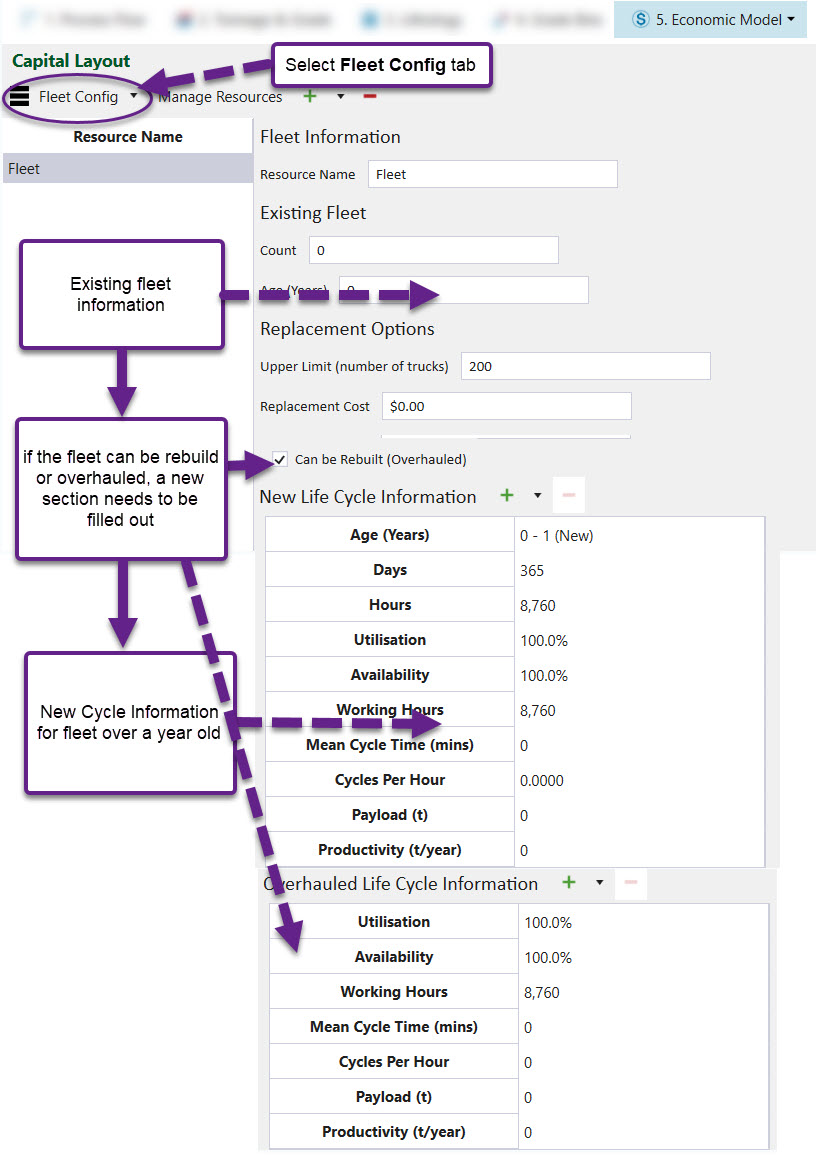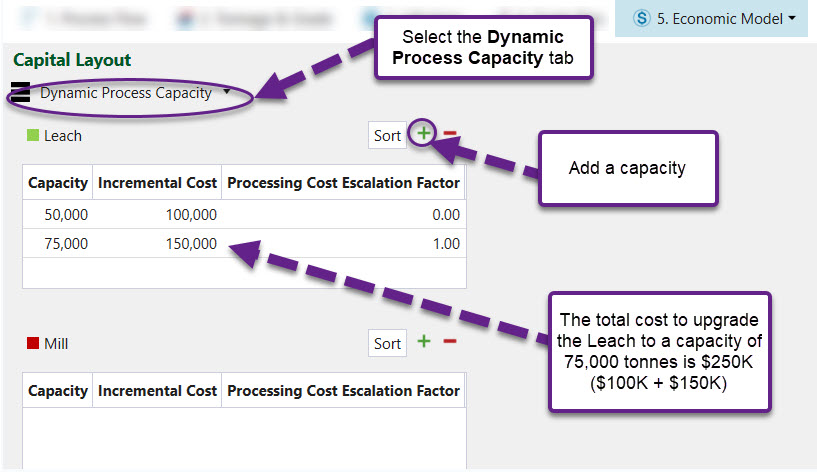Capital Layout
This tab contains the following four sections.
Fleet Config
The Fleet Config tab provides an interface to define the cost to buy and refurbish truck fleet. Performance information can also be provided throughout the lifetime of the fleet.
For each fleet, the following information is required:
- Name— The name of the fleet.
- Existing fleet — The number of existing fleet.
- Existing fleet — The age of the existing fleet.
- Replacement options
- Upper limit— The maximum number of units that can be considered.
- Replacement cost— The capital expenditure associated with a brand, new fleet.
- Rebuilt option— The capital expenditure if the unit will be rebuilt rather than replaced. If this checkbox is ticked, a new section called Overhauled Life Cycle Information needs to be filled out.
If the fleet is over a year old, you will need to complete a secondary section called New Life Cycle Information.

When providing information life cycle information for new and overhauled fleet, the software calculates a number of derived parameters. These parameters are explained below.
| Parameter | Definition |
|---|---|
| Availability (%) | The percentage of hours the fleet is available and used. |
| Utilisation (%) | The percentage of hours the fleet is used. |
| Average cycle time | The average cycle time. This parameter is used to calculate the number of cycles per hour. |
| Payload | The amount of weight a truck can carry. |
| Productivity | Payload * Cycles per hour * Working hours |
| Cycles per hour | 60 (minutes in hour) / Mean cycle time |
| Working hours | Hours * Utilisation(%) * Availability (%) |
Dynamic Capital
The Dynamic Capital tab is used to assign a capital cost to each stage per pit. More expensive stages would be expected to be mined later while cheaper to mine stages would be expected to be scheduled earlier in a mining sequence.

Dynamic Process Capacity
The Dynamic Process Capacity tab is used to define several capacities per process and assign each an incremental cost for upgrading. When multiple capacities are provided, the software will make the optimum decision from the table and ignore the capacity set in the Economic Model > Calendar. If only one capacity is defined, it will be ignored, and the value set in the Economic Model > Calendar will be used.

Dynamic Capital Infrastructure
The Dynamic Capital Infrastructure tab is an interface for defining storage destinations and the transportation cost of material. It is expected that a few different paths will be defined so that the software can select the optimal path.

